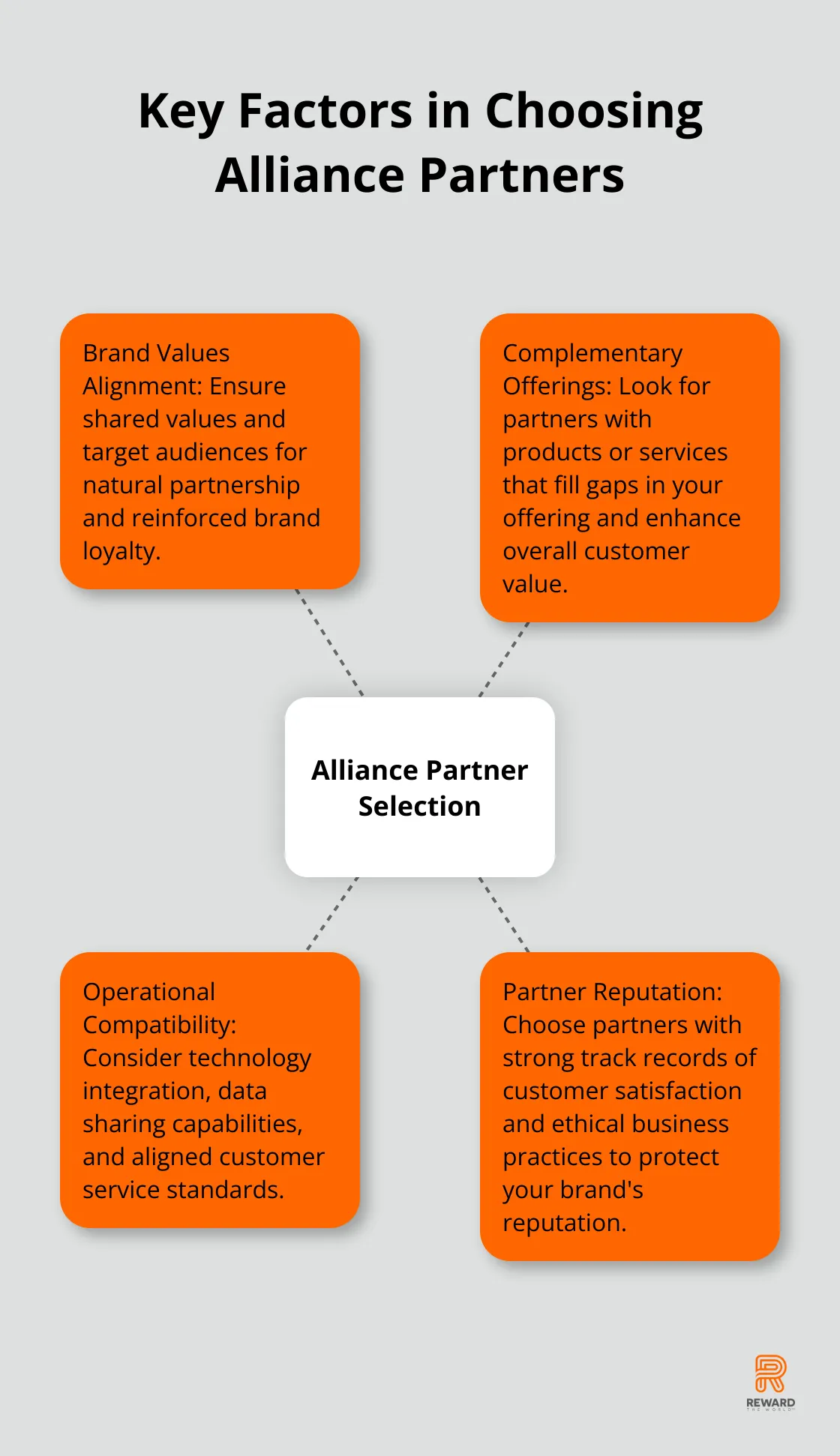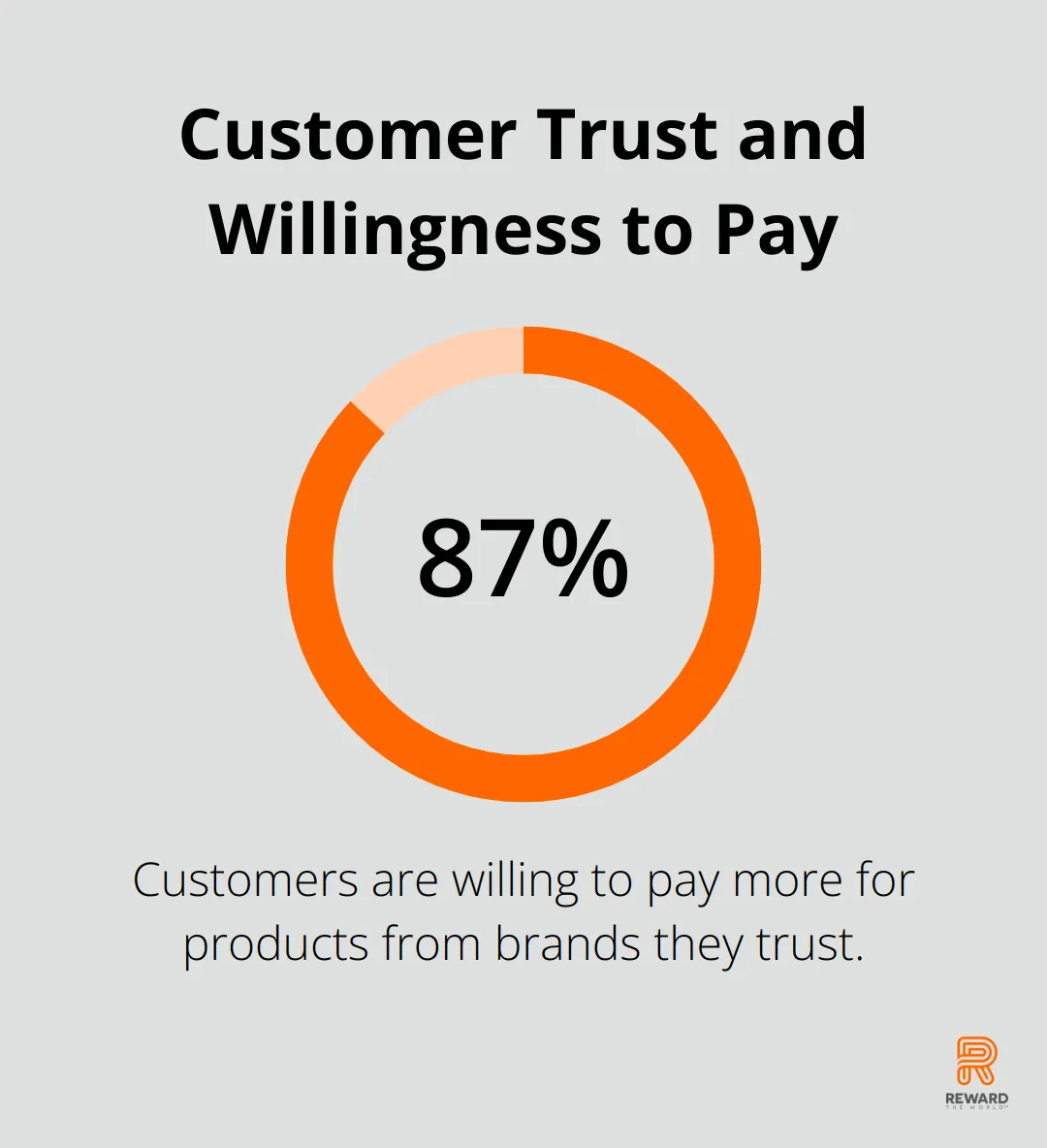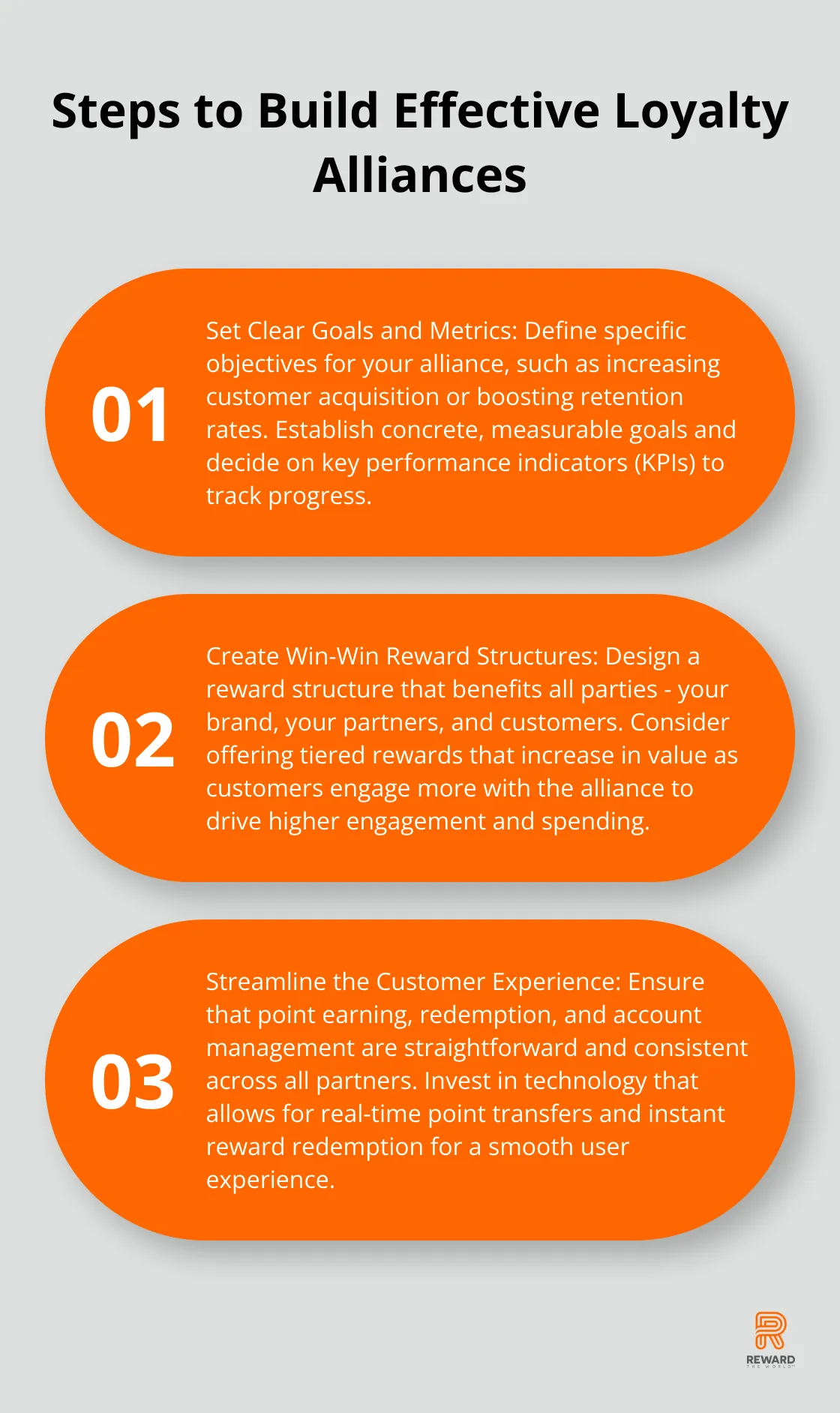
Strategic alliances are reshaping the loyalty landscape. At Reward the World, we’ve seen firsthand how cross-brand partnerships can supercharge customer engagement and program value.
These collaborations open up new avenues for reward redemption, expand market reach, and create unique customer experiences. In this post, we’ll explore the power of strategic alliances in loyalty programs and how to implement them effectively.
How Strategic Alliances Boost Loyalty Programs
Strategic alliances transform the loyalty program landscape. These partnerships serve as powerful tools that enhance customer value propositions, expand market reach, and leverage complementary resources.
Enhancing Customer Value
Strategic alliances enable loyalty programs to offer a broader range of rewards, which appeals to a diverse customer base. A Deloitte study revealed that loyalty leaders offer more customized, personalized benefits that go beyond points and cash rewards. This diversity in rewards often results in higher engagement rates and increased customer satisfaction.
Expanding Market Reach
Alliances provide an excellent opportunity to tap into new customer segments. When loyalty programs partner with complementary brands, they gain access to each other’s customer bases. This cross-pollination often leads to significant growth in membership numbers.
The partnership between Qantas and Woolworths in Australia exemplifies this concept. By linking frequent flyer miles with everyday grocery purchases, both brands increased customer engagement and loyalty.
Leveraging Shared Resources
Strategic alliances allow loyalty programs to tap into each other’s strengths and resources (including technology, data insights, and marketing capabilities). Partners can create more sophisticated and effective loyalty initiatives by pooling these resources.
Some loyalty programs now use AI and blockchain technology to enhance their offerings. These technologies help personalize rewards, simplify program management, and even allow for the interconnection of disparate loyalty programs.
Choosing the Right Partners
Selecting appropriate partners proves essential for successful alliances. Key factors to consider include:
- Alignment in brand values
- Compatibility of target audiences
- Operational compatibility
A misaligned partnership can lead to confusion and dissatisfaction among customers, undermining the benefits of the alliance.
As the loyalty landscape continues to evolve, strategic alliances will play an increasingly important role in creating successful, engaging loyalty programs. The next section will explore key considerations for choosing alliance partners to maximize the potential of these collaborations.
How to Choose the Right Alliance Partners
Selecting the right partners for your loyalty program alliance determines its success. The best partnerships create synergy and add value for all parties involved, especially the customers.

Aligning Brand Values and Audience
Look for brands that share similar values and target audiences when choosing alliance partners. This alignment ensures that the partnership feels natural to customers and reinforces brand loyalty across the board. (A luxury hotel chain partnering with a high-end car rental service makes sense because they cater to similar customer segments.)
A study by Salsify found that 87% of customers will pay more for products from brands they trust. This statistic underscores the importance of partnering with brands that resonate with your target audience.

Finding Complementary Offerings
The most successful alliances often involve partners with complementary products or services. This approach allows you to fill gaps in your offering and provide a more comprehensive value proposition to your customers.
American Express partnered with Uber to offer cardholders extra reward points that count toward redemption awards earned every 500 reward points. This partnership works well because it combines a financial service with a transportation service, enhancing the overall customer experience.
Ensuring Operational Compatibility
Don’t overlook the practical aspects of partnership. Operational compatibility is key to a smooth alliance. This includes factors like technology integration, data sharing capabilities, and customer service standards.
When evaluating operational compatibility, consider the following:
- Can your systems easily integrate for seamless point accrual and redemption?
- Do you have similar data privacy and security standards?
- Are your customer service philosophies aligned?
The goal is to create a frictionless experience for your customers across all partner touchpoints.
Evaluating Partner Reputation
The reputation of your alliance partners directly impacts your brand. Choose partners with a strong track record of customer satisfaction and ethical business practices. (A partnership with a company known for poor customer service or questionable practices can damage your brand’s reputation.)
Try to conduct thorough research on potential partners, including customer reviews, industry ratings, and any past partnership experiences. This due diligence helps ensure that your alliance enhances, rather than detracts from, your brand’s value.
With these considerations in mind, the next step is to implement successful loyalty program alliances that maximize benefits for all parties involved.
How to Build Effective Loyalty Alliances
Set Clear Goals and Metrics
Start by defining specific objectives for your alliance. You should aim to increase customer acquisition, boost retention rates, or expand into new markets. Establish concrete, measurable goals. For instance, you might target a 20% increase in active users within six months or a 15% boost in average transaction value.

Next, decide on key performance indicators (KPIs) to track progress. These could include metrics like redemption rates, partner sales contribution, or Net Promoter Score (NPS) improvements.
Create Win-Win Reward Structures
Design a reward structure that benefits all parties – your brand, your partners, and most importantly, your customers. Consider offering tiered rewards that increase in value as customers engage more with the alliance. This approach can drive higher engagement and spending.
For example, a hotel chain partnering with an airline might offer 2x points on flight bookings for silver-tier members, and 3x points for gold-tier members. This incentivizes customers to reach higher tiers and engage more with both brands.
Streamline the Customer Experience
A seamless customer experience across all partners is essential for alliance success. Ensure that point earning, redemption, and account management are straightforward and consistent. A report by PwC states that 32% of customers would stop doing business with a brand they loved after just one bad experience.
Invest in technology that allows for real-time point transfers and instant reward redemption across partners. Some platforms offer instant reward delivery across millions of options, ensuring a smooth experience for users.
Collaborate on Marketing Efforts
Joint marketing initiatives can significantly amplify the reach and impact of your loyalty alliance. Develop a coordinated marketing strategy that leverages each partner’s strengths and channels. This might include co-branded email campaigns, social media cross-promotions, or even joint offline events.
A study by Hinge Research Institute found that businesses with strong marketing partnerships grow 28% faster than those without. Pooling resources and expertise can create more compelling and far-reaching campaigns.
Regularly Review and Optimize
The loyalty landscape constantly evolves, and your alliances should too. Schedule regular reviews of your partnership performance against set KPIs. Be prepared to adjust your strategy based on data and customer feedback.
Consider conducting quarterly partner meetings to discuss performance, share insights, and brainstorm improvements. This ongoing collaboration ensures that your alliance remains relevant and valuable to customers over time.
Final Thoughts
Strategic alliances and cross-brand partnerships have revolutionized loyalty programs. These collaborations expand reward offerings, reach new markets, and leverage shared resources to create compelling customer experiences. Careful partner selection and seamless integration form the foundation of successful alliances, ensuring aligned values and operational compatibility.
The future of loyalty programs will embrace collaborative ecosystems and advanced technologies. These innovations will enable more personalized and engaging customer experiences. Companies that adopt strategic alliances will meet evolving customer needs and expectations more effectively.
Reward the World supports businesses in creating powerful loyalty ecosystems through cross-brand partnerships. Our platform facilitates instant reward delivery across millions of options in over 60 countries. We strive to help companies boost customer engagement and enhance overall performance through innovative loyalty solutions.
